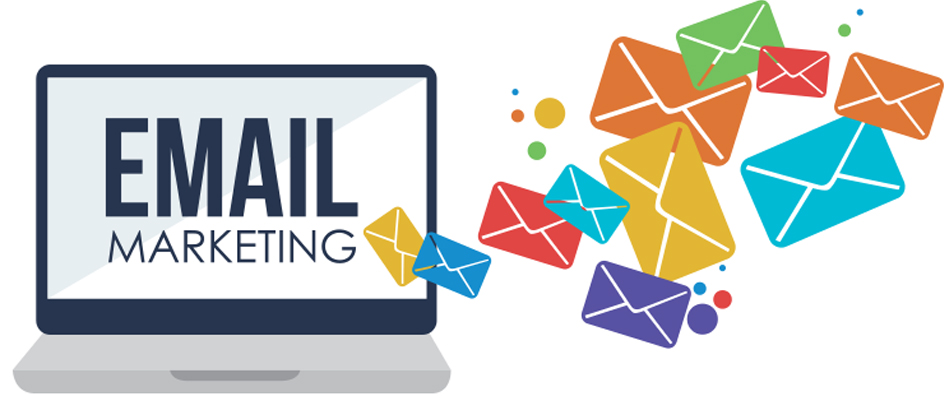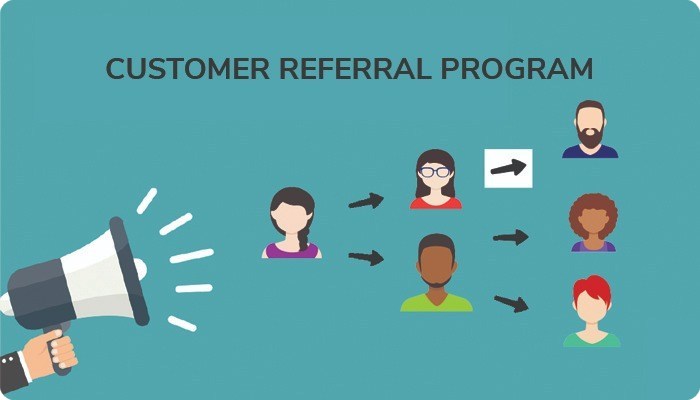
14 Simple Ways To Get Free Leads
One of the best strategies to save expenses whilst in startup mode or just boosting your business’s earning potential is to create leads. But doing it is difficult.
We’re here with an update to provide you a few more ideas on how to start producing more free leads. Let’s get started.
Getting your business to produce leads for free is a terrific approach to position it for success since you can use the money you would have spent on lead generation for other crucial areas of your organization. Here are three more methods you may use to begin obtaining more free leads.
For sales teams and marketers, generating leads—the act of locating and cultivating potential customers—is always of the utmost importance. Sponsored lead generation strategies, such as pay-per-click marketing and sponsored media, can be effective, but frequently the company with the highest budget prevails.
The good news is that you may produce leads for free while retaining lead quality by utilizing a variety of sales and marketing methods.
14 free lead creation strategies and the tools to use them are covered in this article plus one bonus one Let’s first discuss the value of free leads.
Free lead generation:
For expansion and profitability, a consistent flow of leads is necessary, but doing so can be expensive. One analysis claims that the typical Cost per Lead (CPL) for B2B businesses is $198. Businesses could spend close to $200 to gain a potential consumer who hasn’t made a purchase yet.
If we look more closely at this sum of money, we can identify the most typical lead creation methods and costs:
Cost of advertising
Costs of media syndication and outreach
Costs of internal labor or outside agencies
Discounts, samples, and coupons are examples of incentive costs.
Costs associated with buying or renting contact lists (not advised if you want leads of good quality)
So, is getting a lead for free actually possible? A lead is merely a potential customer who has expressed interest in your goods or services. They might have done one of three things: gone to your website, clicked a link in an email, or filled out a form at an event.
Without going broke on the aforementioned expenses, it is certainly possible to generate a cold, warm, or hot lead. We’ll explain how below.
Best practices and resources for generating free leads
It’s difficult to go wrong with these tools and strategies to create leads for free, whether you’re seeking to decrease your marketing expenses or test a new sales strategy.
1. Send quality emails
Without a doubt, email is the most well-liked lead generating method, and for good reason. An estimated $38 is generated for every $1 spent on email, or a staggering 3,800% return on investment (ROI). It’s the preferred means of contact between customers and businesses, making it perfect for initial communications and follow-ups.
Here are some tried-and-true methods for writing a better sales email:
Grab the reader’s attention: According to research, 47% of email receivers choose whether to open an email based just on the subject line! The first important step is to write a catchy topic line. Use a provocative question, a startling statistic, or anything else that makes the reader think of an issue they are now experiencing (and that you can fix). Make the email’s opening few phrases similarly captivating by providing compelling details about the issue or opportunity at hand.

Personalize your message: Because personalized emails are 5.7 times more likely to generate income, your message should never sound generic. Include the name of your potential customer (in the email’s subject line or introductory paragraph). As an example, you may say, “I loved your recent social media post…” or “Congratulations on your recent event.” You could also make reference to their role, needs, or accomplishments.
Consider the receiver, word count, and timing of your email to optimize the logistics. Do your homework and wherever feasible send your email to the decision-makers at the company. In some circumstances, a concise email can help you get your foot in the door, but according to one study, emails with roughly 300 words had response rates that were significantly higher than those with only 100 words. Don’t forget that if you can timing your email perfectly, such as after leadership changes, product launches, or new investment within the target company, you’ll have far better luck.
Make every email valuable to avoid being classified as spam by including a lot of value. Include unique content, practical tools, and pointers that are tailored to the needs of the prospect. You may add, “After reading your most recent blog post, I was reminded of this one, which offers a wealth of information on the same subject. I believed it would be beneficial to you. Please let me know your thoughts.
Include a call to action that is clear: Make sure your link, button, phone number, etc. sticks out so that the prospect may contact you as easily as possible. Describe the subsequent steps as well (for instance, setting up a demo, answering the email, or making a casual call).
2. Monitor the traffic to your website.
Take into account that website visitors are likely interested in your goods or services, thus they should be included to your list of prospects. However, if they leave without registering or making a purchase, they are never identified again.
There is a better approach. By providing you with precise contact information in real-time, site monitoring. You may create a large database of potential leads by using information like company names, email addresses, phone numbers, and even LinkedIn profiles that are revealed by using the IP addresses of website users. For simple lead scoring, you can combine it with your customer relationship management (CRM) program.
Website URL
Address (Email)
Business Plan
B2B: business to business
Consumer to business (B2C)
3. Make use of social media
Although social media is often thought of by businesses as a lead generation tool, it also helps establish brands. This is because there is so much information on social media, and because there are so many people using sites like Facebook, Instagram, Twitter, LinkedIn, and YouTube. Here are some strategies for luring fresh leads:
Host a live event, such as a Q&A, Ask Me Anything, or Twitter chat, with eminent speakers.
Conduct polls or surveys that inquire about a problem area or pertinent subject.
Share gated information, such as an info graphic or e-book.
Try holding a raffle or contest with a given prize to broaden the audience for your profile.
Use a free tool, study report, or coupon code to entice leads.
Make a video testimonial demonstrating how your product has benefited others.
Utilize tools for social media automation to plan posts and generate leads automatically.
Keep in mind that innovation is king and value is crucial while writing your pieces. Two out of three individuals are more likely to make a purchase after watching a video that demonstrates how a product has benefited someone similar to them, according to SMM experts, therefore posting testimonial films is a top priority.
Last but not least, remember to utilize social listening. Examine social media discussions about your brand and those of your rivals to see what people are saying. Reading conversations on social media can teach you a lot about how to make your product or marketing efforts better.
Additionally, you may use your own remarks on social media to get free leads. For instance, you might suggest your product and explain how it better meets their needs if you read a complaint about a rival product.
4. Boost your aesthetics
Your first line of defense for obtaining free leads is your website and social media channels. The requirement for a visually appealing design is stronger than ever, given that there are millions of websites, blogs, and social media pages to investigate. Update your look and flow if your website bounce rate is high or your social media following is declining.
Here’s how to improve the aesthetics of your website:
Beautiful visuals are necessary. Update the graphics and web design as necessary.
Keep your website’s menu or navigation clear, uncluttered, and simple to use.
Avoid stuffing a page with too much text or images.
Place enticing lead capture forms all across the website.
Make sure your lead-capturing buttons and other components stand out.
The importance of consistency cannot be overstated. Develop a color palette and choose a few fonts and filters that speak to your brand. Utilize these components consistently to develop your brand’s online persona.
Knowing your audience is important because aesthetics are subjective. Study a few of your profitable rivals. What style do they employ, and what do your clients find appealing?
5. Improve the content of your blog.
Blogging, which is at the center of inbound marketing, is a fantastic way to get free leads. In reality, some of the most qualified and engaged leads are those who move forward in the inbound process. As long as you keep the term “value” in mind, it works.
You must address your audience’s concerns in every piece, including articles, webinars, podcasts, etc. Visit forums like Quora, Reddit, or AnswerThePublic for ideas; make sure the next step after reading is clear; if they have trouble with razor-thin margins, you could design a guide called “5 Proven Steps to Maximize Revenue.” Most importantly, make sure the next step after reading is clear.
Use SEO best practices to ensure that your material appears in search engine results, and finally.
Following are a few tried-and-true guidelines for blog post optimization:
To locate keywords relevant to your audience, try using Google’s Keyword Tool, Soovle.com, or keywordtool.io. Incorporate your keywords naturally and intelligently throughout your postings.
Include visuals: Adding unique images, infographics, and videos will increase the number of people who read your blog content. To improve your SEO, don’t forget to include descriptive alt text for each image.
Create intriguing titles: The title of your blog article has a significant impact on your leads. Their engagement with your blog article will be influenced by a compelling, original, and thought-provoking title. Use unusual language, touchy subjects, and attention-grabbing phrases to draw the reader in.
Take into account the reader’s experience by reading each blog post aloud before publishing. It must be visually appealing and readable. To keep readers interested, divide your piece into brief paragraphs, bulleted lists, and other digestible sections.
6. Use guest posting
For your lead generation efforts, guest articles offer a potent combination of impact, simplicity, and affordability. Companies frequently consent to an article exchange in exchange for an increase in readership.
They give your brand immediate exposure to a new audience, whether you submit them yourself or request them. Each post advances your position as an industry authority, whether you do it by highlighting thinking leaders or by elevating your own profile. This is especially significant in B2B marketing, where building and maintaining personal relationships with clients can be vital to success.
Leo Widrich, a co-founder of Buffer, gave an amazing example of how he attracted 100,000 clients by frequently guest blogging. This tactic not only generated leads for sales but also acquired backlinks swiftly, which raised the authority and rating of their website.
To see about blogging on Leads4biz click here
7. Connect with influencers
A prime example of “social proof,” or the notion that individuals would follow the views or behaviors of others they trust, is influencer marketing. It is also a lead acquisition channel that is expanding quickly.
To reach your audience, you can employ the voice of a thought leader, authority, or influencer, frequently in exchange for social media mentions, free products, or other perks.
One error companies make is attempting to control the influencer’s creativity or voice, which devalues the most important component – authenticity. Give them specific instructions for your brand and your objectives, then allow them to create content that suits their voice and style.
It’s also crucial to think about working with a macro-influencer as opposed to a micro-influencer. A micro-influencer has between 500 and 10,000 followers, and a macro-influencer has between 10,000 and 1 million.
Also if you are just looking to build your B2B brand, then perhaps a B2B influencer is better suited to you.
Although micro-influencers have a much smaller following than macro-influencers, some firms may find them to be more profitable. Micro-influencers frequently interact more with their fans. In contrast to macro-influencers, whose fans might often feel lost in a sea of admirers, their followers feel more connected to and devoted to them.
According to a study by HelloSociety, micro-influencers generated 22.2% more weekly conversions and 60% more engagement than macro-influencers, making them 6.7 times more cost-effective.
Here are some pointers for choosing the ideal influencers for your business:
Look up the hashtags you want to use to promote your business, such as #contentmarketing or #smallbusiness.
Find influencers that currently use and like your goods or services for even better results. You can find them by searching for your business name or brand-related hashtags.
8. Boost customer recommendations
Compared to outbound marketing strategies like cold calling or advertisements, people place a lot more trust in user evaluations and word-of-mouth. Therefore, mobilizing your current consumers is one of the best strategies to bring in new business.
Create a convincing customer referral offer, like as a gift card or a discount, for both the referrer and the referee. You can also gain access to premium features or premium content for a little fee. This can be the push you need to get your clients to tell their friends about you.

Asking your customers and subscribers to recommend their friends to your email list is a simpler ask that nevertheless generates new leads.
9. Help out where you can
Finding the customers who could genuinely benefit from our goods or services is our responsibility. People who are asking the proper questions can be found in droves through Google search.
On question-answer websites, you might locate customers looking for solutions connected to your goods or services. Look around on websites like:
Quora
(For developers) Stack Overflow and Github
Facebook Groups
Although these websites are not intended for direct marketing, they are the ideal place to establish contact with prospective prospects.
Spend some time coming up with intelligent answers for each relevant question. This is your chance to increase people’s familiarity and trust with your company. It’s critical to each post’s value addition and sincere helpfulness.
You can also include backlinks to your website as long as your response is comprehensive. Install references to articles that expand on your response.
In the interim, you should also frequently add pertinent offers and links to your material to your bio. Readers will spend more time reading your bio the more thoughtfully you respond to their questions.
10. The gift of original content
To establish yourself as a leader in your field, go above and beyond. Give your users access to free content such as podcasts, webinars, and videos. Original photographs, printables, applications, eBooks, and audiobooks are a few options to think about.
Your writing ought to:
Offer prospective clients substantial value
Encourage the use of your products and services by viewers, readers, and listeners.
Keep in mind that your material has to be 90% persuasive and 10% helpful.
You may attempt to produce a how-to video, helpful webinar, or educational podcast. People are more inclined to become potential clients after using your free tools and believing in your authority.
11. Utilize LinkedIn’s search function.
Finding fresh, high-quality leads might be as simple as conducting a search on LinkedIn. You can utilize the platform’s search feature to locate potential customers who fit your ideal customer profile but haven’t yet been discovered.
Start with a straightforward keyword that relates to the kinds of businesses you’re aiming for. The results can then be filtered by company type or location. There are numerous additional strategies to focus on potential customers who are a perfect fit for your business.
You can get in touch with a lead straight on the site as soon as you see one that seems promising. Alternately, you might start focusing on the business through your other marketing channels to draw them into your sales funnel.
12. Make Effective Landing Pages
You hardly ever consider raising the caliber of your website when you’re trying to get free leads. However, that can be exactly what you require to boost your site’s ability to convert visitors more quickly.
Improved landing page quality in particular can have a significant impact on whether a site visitor converts to a lead. Making ensuring that your landing page is extremely relevant to the search term that a website user would use to find it is the most crucial thing to do.
As an illustration, a search for “what is a website analytics tool? Then, you must ensure that you provide a concise, unambiguous response to their search query.
Additionally, it’s critical that your landing pages provide a straightforward approach for website visitors to enter your sales funnel and proceed to the next step. Make sure the forms on your landing pages are clear and easy for users to fill out.
Think about using an incentive to persuade them to submit the form. In the example given above, you could provide that enticement by offering an extensive ebook on website analytics software or a weekly newsletter covering relevant subjects.
13. Request further online reviews
Up to 93% of internet users read online reviews before making a purchase, according to research. That’s a significant portion, highlighting the significance of internet reviews in the purchasing process.
You might be able to use this to your advantage to help your business produce more leads. To accomplish this, you would need to persuade past clients to submit a review detailing their interactions with your goods or services.
Think about some of the techniques listed below:
Provide a reward
Make it simple for clients to provide reviews
Make the request automatically so you won’t have to.
Create a review template.
More reviews will attract the attention of potential customers. And once you can persuade those potential clients to visit your website, you can start targeting them just as you would any other lead.
14. Cold calls
Cold calling has a rather negative reputation. Finding fresh leads can still be done in an efficient manner, though. The secret to making the most of your cold calls is to first offer value to prospects before making too aggressive sales pitches.
Influencer Gary Vaynerchuk, for instance, suggested a cold-calling tactic he calls Jab, Jab, Jab, Right Hook. The theory behind this is that before you have the authority to push the prospect for a sale (the right hook), you must continually deliver value (the jabs).
These kinds of tactics work because they place a strong emphasis on developing relationships with potential clients. When you establish yourself as a trustworthy source of value for someone, they are far more likely to make a purchase from you when you do ask because they feel compelled to repay the favor.
Also if you have done some ground work before; like collected cards from an event where they all got free pens , did they really think they were free??
Bonus free way!
Go to our search page here
Click on ‘We are buying‘ if your category of business comes up there, that means we have buyers for you, you are welcome!






